Today’s Current Affairs: 11th April 2024 for UPSC IAS exams, State PSC exams, SSC CGL, State SSC, RRB, Railways, Banking Exam & IBPS, etc
Table of Contents
International Narcotics Control Board:
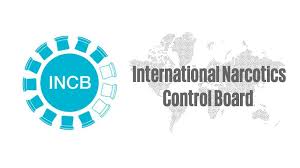
India’s Jagjit Pavadia was re-elected for a third term for five years from March 2025-2030 to the International Narcotics Control Board.
- International Narcotics Control Board was established in 1968 and is the independent and quasi-judicial monitoring body for the implementation of the United Nations international drug control conventions.
- It was established by the Single Convention on Narcotic Drugs of 1961 by merging two bodies: the Permanent Central Narcotics Board, created by the 1925 International Opium Convention; and the Drug Supervisory Body, created by the 1931 Convention for Limiting the Manufacture and Regulating the Distribution of Narcotic Drugs.
- It consists of 13 members who are elected by the Economic and Social Council and who serve in their personal capacity, not as government representatives.
- Three members with medical, pharmacological or pharmaceutical experience are elected from a list of persons nominated by the World Health Organization (WHO) and 10 members are elected from a list of persons nominated by Governments
- INCB endeavours in cooperation with Governments, to ensure that adequate supplies of drugs are available for medical and scientific uses and that the diversion of drugs from licit sources to illicit channels does not occur.
- It also monitors Governments’ control over chemicals used in the illicit manufacture of drugs and assists them in preventing the diversion of those chemicals into illicit traffic.
John L. ‘Jack’ Swigert Jr. Award : Chandrayaan 3 Team
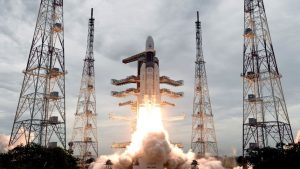
Chandrayaan-3 was the first to land on the uncharted South Pole region of the Moon.
- In recognition of this groundbreaking accomplishment, the Chandrayaan-3 team has been honored with the prestigious 2024 John L. ‘Jack’ Swigert Jr. Award for Space Exploration.
- The award, presented by the Space Foundation during the annual Space Symposium in Colorado, acknowledges the extraordinary achievements of the Indian Space Research Organisation (ISRO) and the Chandrayaan-3 team in the realm of space exploration and discovery.
- Chandrayaan-3, launched by ISRO in July 2023, comprised a lander named Vikram and a rover called Pragyan.
- The mission made history when Vikram successfully touched down on the lunar surface at the South Pole, an area that had remained unexplored by previous missions.
Voter Verified Paper Audit Trail (VVPAT):
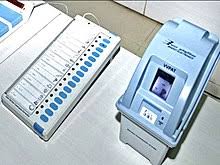
The Supreme Court announced that it would soon address petitions for 100% verification of Voter Verified Paper Audit Trail (VVPAT) slips, just ahead of the first phase of voting on 19th April 2024.
- The VVPAT machine is attached to the ballot unit of the Electronic Voting Machine (EVM), and provides visual verification for the vote cast by a voter by printing a slip of paper with the voter’s choice on it.
- The slip of paper with the candidate’s details is briefly displayed for verification behind a glass window, giving the voter 7 seconds, before dropping into a compartment below.
- Voters are not allowed to take the VVPAT slip home as it is used to verify votes in five randomly selected polling booths.
- The concept aims to enhance trust in the voting process by enabling physical verification of electronically cast votes, reassuring both voters and political parties about the accuracy of their votes.
- The concept of the VVPAT machine was initially proposed in 2010 during a meeting between the Election Commission of India (ECI) and political parties to enhance transparency in the EVM-based polling process.
- Following prototype preparation, field trials were conducted in Ladakh, Thiruvananthapuram, Cherrapunjee, East Delhi, and Jaisalmer in July 2011.
- It led to the approval of VVPAT by an expert committee of the ECI in February 2013.
Status Of Total Fertility Rate (TFR):

India’s declining fertility rate, recently projected by The Lancet, suggests a demographic transition with potential economic benefits.
- TFR in India has drastically decreased from 6.2 in 1950 to below 2 in 2021.
- It is projected to further decline to 1.29 by 2050 and a concerning level of 1.04 by 2100.
- This decline is part of a global trend, with the global fertility rate dropping nearly 50% in the past 70 years.
- The United Nations predicts global population growth to reach 10.9 billion by 2100, with TFR converging to near replacement level.
- The Total Fertility Rate (TFR) of 2.0 in India signifies stable long-term population trends, with two parents replaced by two children, indicating that the country may not experience population decline for 30-40 years due to a substantial youth population.
About TFR:
- The Total Fertility Rate (TFR) represents the average number of children a woman would have in her lifetime given current fertility rates.
- A TFR of 2.1 signifies replacement-level fertility, where each generation replaces itself. TFR below 2.1 suggests a declining population over time as each generation produces fewer children than its predecessor.
Higgs Boson : Nobel prize-winning British physicist Died

Nobel prize-winning British physicist Peter Higgs, who proposed the existence of a mass-giving particle, which became known as the Higgs boson or the “God particle”, has died aged 94.
- The Higgs boson is the fundamental force-carrying particle of the Higgs field, which is responsible for granting fundamental particles their mass.
- This field was first proposed in the mid-sixties by Peter Higgs, for whom the particle is named.
- The particle was finally discovered in 2012, by researchers at the Large Hadron Collider (LHC), the most powerful particle accelerator in the world, located at the European particle physics laboratory CERN, Switzerland.
- The LHC confirmed the existence of the Higgs field and the mechanism that gives rise to mass and thus completed the standard model of particle physics.
- It is one of the 17 elementary particles that make up the Standard Model of particle physics, which is scientists’ best theory about the behaviours of the universe’s most basic building blocks.
- Higgs boson plays such a fundamental role in subatomic physics that it is sometimes referred to as the “God particle.”
- The Higgs boson has a mass of 125 billion electron volts, meaning it is 130 times more massive than a proton.
- It is also chargeless with zero spin, a quantum mechanical equivalent to angular momentum.
- It is the only elementary particle with no spin.
C-Dome :
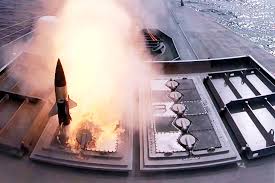
Israel for the first time deployed its ship-mounted defence system, called the C-Dome.
- C-Dome is a naval version of Israel’s Iron Dome air defence system, used to shield against rocket and missile attacks.
- The Iron Dome, which was activated in 2011 and has an effectiveness of about 90%, works by using radars to detect short-range rockets before destroying them with its own missiles.
- The C-Dome, which was first unveiled in 2014, declared operational in 2022,works similarly to the Iron Dome, using some of the same technology, except that it’s mounted on ships.
- It is mounted on Sa’ar 6-class corvettes, German-made warships, and uses the same interceptor as the Iron Dome.
- Unlike the Iron Dome, which has its own dedicated radar, the C-Dome is integrated into the ship’s radar to detect incoming targets.
- C-Dome ensures full-circular vessel protection and high kill probability against a full spectrum of modern threats—maritime and coastal.
- Iron Dome is Israel’s air missile defense system that can defend against short-range rockets, intercepting them in the air above the state.
- It is capable of successfully handling multiple rockets at a time.
- Developed by Rafael Advanced Defense Systems and Israel Aerospace Industries, the system became operational in 2011.
Global Hepatitis Report 2024:

According to the Global Hepatitis Report 2024 released by the World Health Organisation (WHO), India is one of the countries with the highest burden of viral hepatitis.
- Hepatitis is inflammation of the liver.
- It can be an acute (short-term) infection or a chronic (long-term) infection.
- There are different types of hepatitis, with different causes:
- Viral hepatitis: It is the most common type and is caused by one of several hepatitis viruses A, B, C, D and E.
- Alcoholic hepatitis is caused by heavy alcohol use.
- Toxic hepatitis can be caused by certain poisons, chemicals, medicines, or supplements.
- Autoimmune hepatitis is a chronic type in which your body’s immune system attacks your liver. The cause is not known, but genetics and one’s environment may play a role.
- Symptoms: Some people with hepatitis do not have symptoms and do not know they are infected. Common symptoms include: Fever, Fatigue, Loss of appetite, Nausea and/or vomiting etc.
- Treatment: Treatment for hepatitis depends on which type one has and whether it is acute or chronic. Acute viral hepatitis often goes away on its own. There are different medicines to treat the different chronic types of hepatitis.
Rhamphicarpa fistulosa : New Report

A new report showed that rice vampireweed (Rhamphicarpa fistulosa) in Africa affected more than 140,000 farm households and caused losses worth $82 million per year to the continent’s economy.
- Rhamphicarpa fistulosa is a facultative, parasitic weed that grows on rice which is also known as rice vampireweed.
- It also affects sorghum and maize and, potentially, other cereal crops.
- The weed can germinate and grow independently but significantly increases its reproductive output when parasitizing a suitable host.
- It is not controlled by fertilisers.
- It is found in at least 35 countries in Africa, with 28 of them home to rainfed lowland rice areas.
- Countries with the highest estimated infestation rates were Gambia, Senegal, Burkina Faso, Togo and, to a lesser extent, Mauritania, Guinea-Bissau, Benin, Malawi and Tanzania.
- Parasitic plant depends on other plants for part or all of their nutrition.
- They parasitize by making a xylem-to-xylem connection with the host plant using a specialized organ called haustorium.
Coordinated Lunar Time:
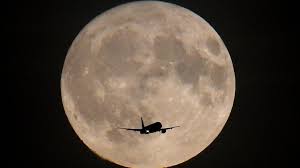
The US White House officially directed the National Aeronautics and Space Administration (NASA) to create a time standard for the Moon, which different international bodies and private companies can use to coordinate their activities on the lunar surface
- Coordinated Lunar Time (LTC) will provide a time-keeping benchmark for lunar spacecraft and satellites that require extreme precision for their missions.
- It will also synchronise the communication between satellites, astronauts, bases and the Earth.
- A unified time standard would be essential for coordinating operations, ensuring the reliability of transactions and managing the logistics of lunar commerce.
- LTC : As there is less gravity on the Moon, time ticks slightly faster there relative to the time on the Earth.In other words, for someone on the Moon, an Earth-based clock will appear to lose on average 58.7 microseconds per Earth day with “additional periodic variations”.
- It can create problems for situations such as a spacecraft seeking to dock on the Moon, data transferring at a specific time, communication, and navigation




